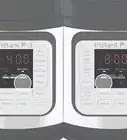wikiHow is a “wiki,” similar to Wikipedia, which means that many of our articles are co-written by multiple authors. To create this article, volunteer authors worked to edit and improve it over time.
wikiHow marks an article as reader-approved once it receives enough positive feedback. This article received 16 testimonials and 93% of readers who voted found it helpful, earning it our reader-approved status.
This article has been viewed 195,729 times.
Learn more...
Dutch ovens have been used for hundreds of years. In fact, they were carried across the United States on the Lewis and Clark expedition in the early 1800s. Dutch ovens are a versatile pot that can be used on stoves, in ovens, campfires and barbecues. Seasoning a Dutch oven is the process of cooking vegetable oil onto the surface of the Dutch oven to prepare it for use. This procedure prevents the Dutch oven from getting rusty, as well as creating a non-stick surface.
Steps
-
1Prepare your Seasoning Area. Ideally, do this outside because the process may produce a lot of smoke. If you must season indoors, be sure to take precautions such as turning on the oven fan and opening windows.
-
2Wash your Dutch oven, if necessary. You need to get the Dutch oven to a point that it has no baked-on food particles, and the surface is free of encrustations. A Dutch oven used on a fire may have a lot of soot, so take care with your hands, surfaces, and clothing.[1]
- If you need to use soap, use just a little, mild dish soap, and rinse well. (If you do not, the taste of soap may stay in the cast iron seasoning and take a long time to get out...yuck!)
- Steel wool will work well, but may cause some areas to discolor.
- Only use power-abrasives such as polishing power tools for Dutch ovens in extremely bad shape.
Advertisement -
3Use a towel to dry out your Dutch oven. Again, if it has been used on a fire, it is likely to be sooty. Turn it over so all water possible evaporates before seasoning.
-
4Wrap a cookie sheet with aluminum foil. Seasoning a Dutch oven will likely cause oil to drip, and this will protect your oven. Be sure the sheet is larger than the base of your Dutch Oven.
- Place the cookie sheet on the lowest shelf in the oven.
-
5Select your grease. There is a lot of debate over the best oil to season cast iron.[2] Whatever you choose, make sure it is not rancid or the taste will stay in your cast iron a long time.[3] The top seasoning oils are:
- Vegetable oil
- Lard
- Vegetable shortening
- Olive oil
- Do not use butter--it will burn rather than season.
-
6Grease the Dutch Oven. With a rag or paper towel, generously lube up your cast iron with food-grade safe oil, inside and out. You do not need to do the handle.
-
7Apply vegetable shortening to the outside and inside of your Dutch oven and lids, if necessary. Use a paper towel or rag to spread the oil.[4]
-
8Place Dutch Oven in oven. Turn heat onto 350F/(176.67 C).[5] Place the Dutch oven upside down. You want the oil to fall out of the pot, which will create an even coating on the surface rather than collecting at the bottom of the pot
-
9Leave the Dutch oven in the grill or stove for 45 to 60 minutes. Although this is generally a safe kitchen activity, monitor for smoking or other issues.[6]
-
10Turn the oven or grill off. Let the Dutch oven sit for 15 to 25 minutes at least. When seasoning a Dutch oven, you want to give the oil a chance to set. Handle the Dutch oven with mitts or other hand coverings, as it will be hot. You can also wait until the oven cools down to room temperature, if you wish. There is no rush here.
-
11Rub off any residual shortening with a towel, if desired. This will also bring out the dark shine of a freshly seasoned Dutch oven. This is how the interior should look when the cast iron Dutch oven is primed for cooking. The exterior does not really matter--it can get dull and not affect cooking.
Community Q&A
-
QuestionCan I use coconut oil to season a Dutch oven?
 Community AnswerI tried it and it didn't work well. I wouldn't recommend it. Use a vegetable oil.
Community AnswerI tried it and it didn't work well. I wouldn't recommend it. Use a vegetable oil. -
QuestionDo I need to apply vegetable oil and shortening?
 Community AnswerIf you use the vegetable oil you won't need the shortening.
Community AnswerIf you use the vegetable oil you won't need the shortening. -
QuestionDo I need to season the lid or just the Dutch Oven itself?
 Community AnswerI would do both. It helps with splatter and clean up.
Community AnswerI would do both. It helps with splatter and clean up.
Things You'll Need
- Dutch oven
- Grill or oven
- Cookie sheet
- Aluminum foil
- Soapy water (if really needed--see tips)
- Towel
- Oven mitt
- Vegetable shortening
- Paper towel
- Kitchen gloves
References
- ↑ https://www.thekitchn.com/how-to-clean-a-dutch-oven-253882
- ↑ https://www.cooksillustrated.com/how_tos/5820-the-ultimate-way-to-season-cast-iron
- ↑ https://www.thekitchn.com/i-seasoned-my-cast-iron-pan-with-flaxseed-oil-and-heres-what-happened-224612
- ↑ https://www.dutchovendude.com/dutch-oven-seasoning.php
- ↑ https://www.kitchensanity.com/cookware/how-to-season-a-dutch-oven/
- ↑ https://www.kitchensanity.com/cookware/how-to-season-a-dutch-oven/
- http://www.chuckwagonsupply.com/history.htm

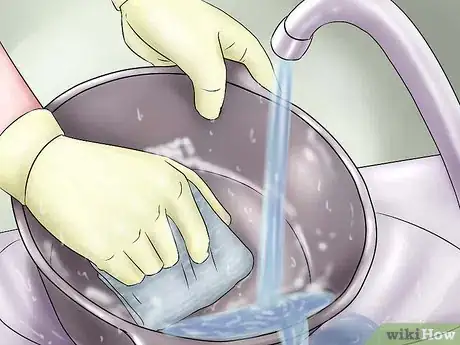
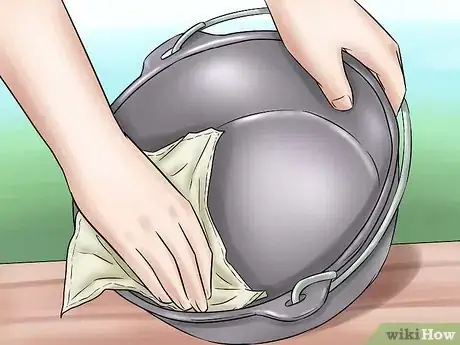
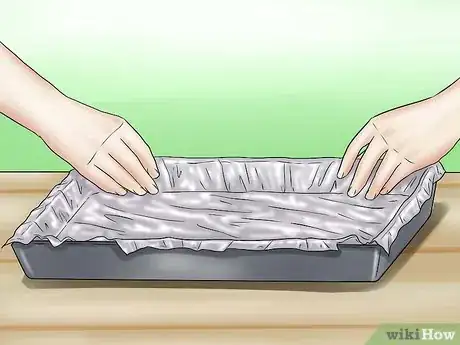
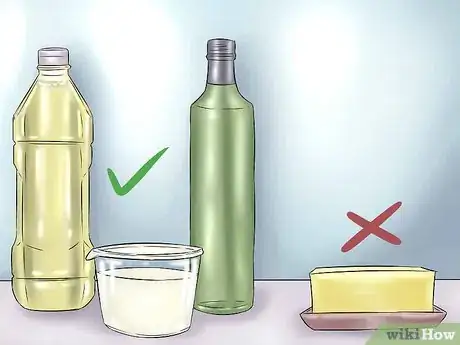

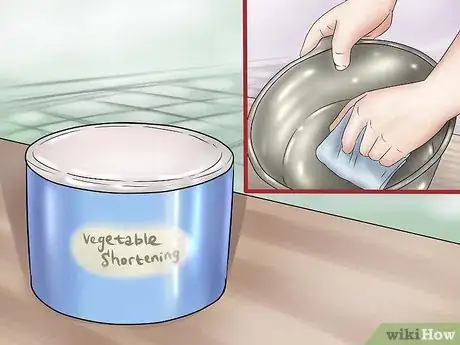
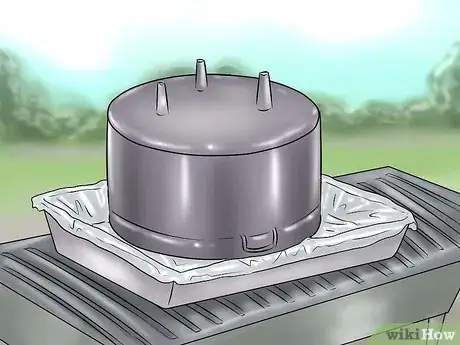
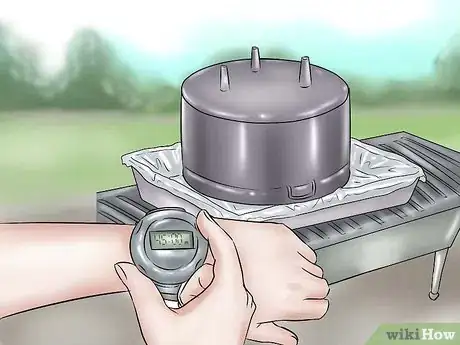
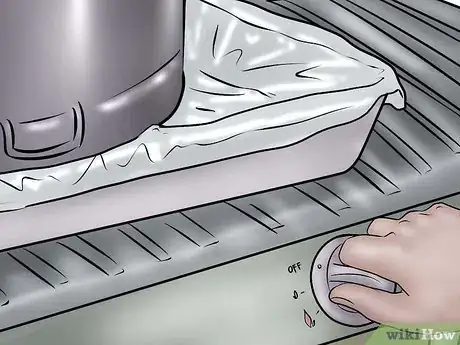
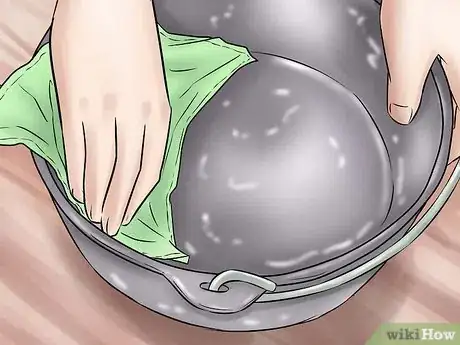
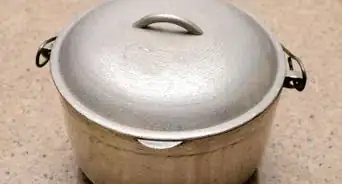
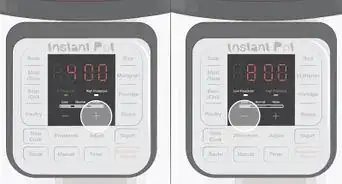
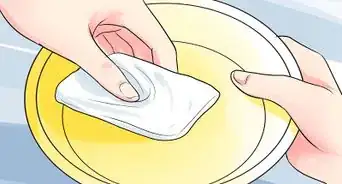

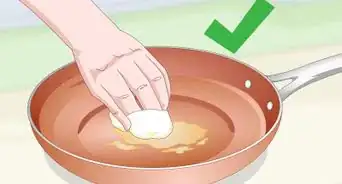
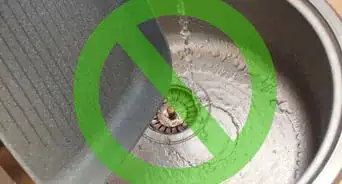
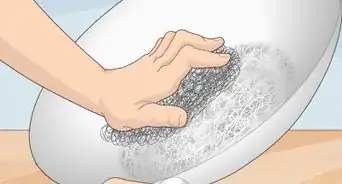










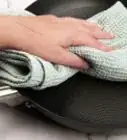
-Step-12-Version-2.webp)
